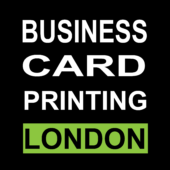Crafting the Perfect Business Card: Your Ultimate Guide
In today’s digital age, where communication often happens through emails, social media, and virtual meetings, the humble business card might seem like a relic of the past. However, it still holds significant value as a tangible representation of your brand and a powerful networking tool. When designed thoughtfully, a business card can leave a lasting impression on potential clients, partners, and contacts. So, what should you put on your business card to make it stand out? Let’s delve into the essentials.
1. Your Name and Title:
This might seem obvious, but your name and title should be the focal point of your business card. Make sure they are prominently displayed and easy to read. Your title provides insight into your role within the company and helps establish your credibility.
2. Contact Information:
Include essential contact details such as your phone number and email address. If applicable, you can also include your physical address. In today’s digital world, adding your professional social media profiles, such as LinkedIn, can also be beneficial for expanding your network.
3. Company Logo:
Incorporating your company’s logo reinforces brand recognition and professionalism. Ensure that the logo is clear and visually appealing. It should be placed strategically to complement the overall design of the card.
4. Unique Selling Proposition (USP):
A brief tagline or statement that highlights what sets you or your company apart can make your business card memorable. Keep it concise yet compelling, conveying the value you offer to potential clients or partners.
5. Visual Elements:
The design of your business card plays a crucial role in making it stand out. Choose a clean and professional layout that reflects your brand identity. Pay attention to typography, color scheme, and imagery to create a visually appealing card that aligns with your brand aesthetic.
6. Call to Action:
Encourage recipients to take the next step by including a call to action. This could be visiting your website, scheduling a consultation, or connecting on social media. A well-placed call to action can prompt meaningful interactions and conversions.
7. QR Code (Optional):
Integrating a QR code on your business card can provide quick access to additional information or resources. This could lead to your website, portfolio, or any other online content relevant to your business. However, ensure that the QR code is scannable and adds value to the recipient.
Conclusion:
In conclusion, a well-designed business card serves as a powerful tool for networking and brand promotion. By including essential information such as your name, contact details, and company logo, along with unique selling propositions and visual elements that reflect your brand identity, you can create a memorable and impactful business card. Remember to keep the design clean and professional while incorporating elements that make it stand out. With the right combination of elements, your business card can leave a lasting impression and pave the way for valuable connections and opportunities.
